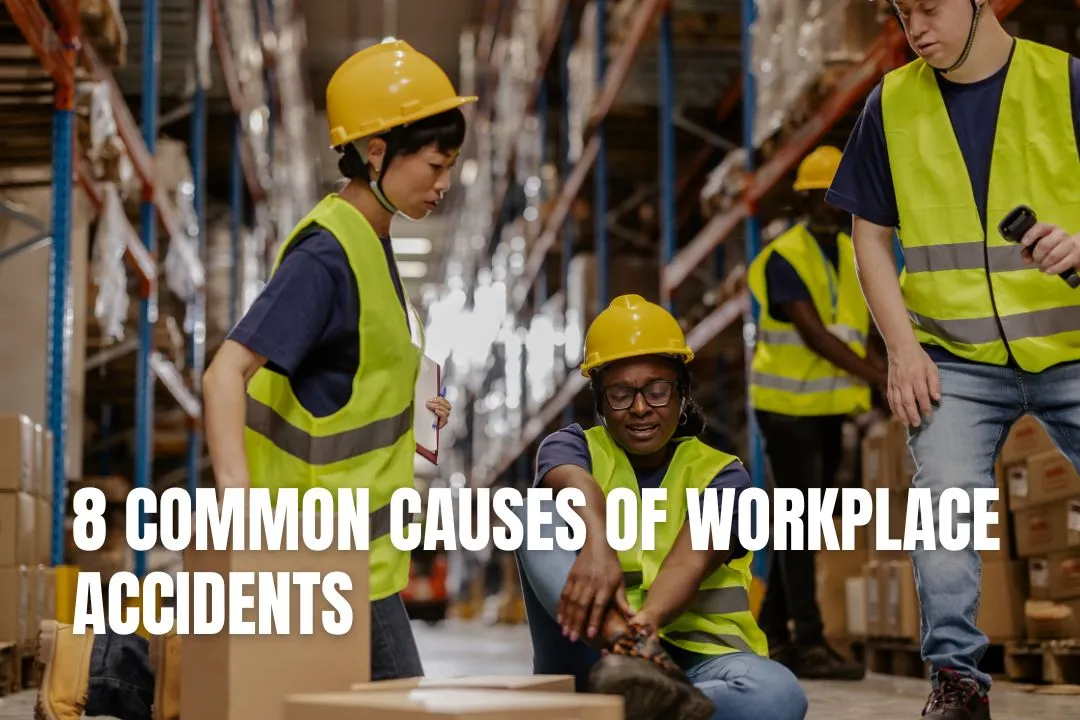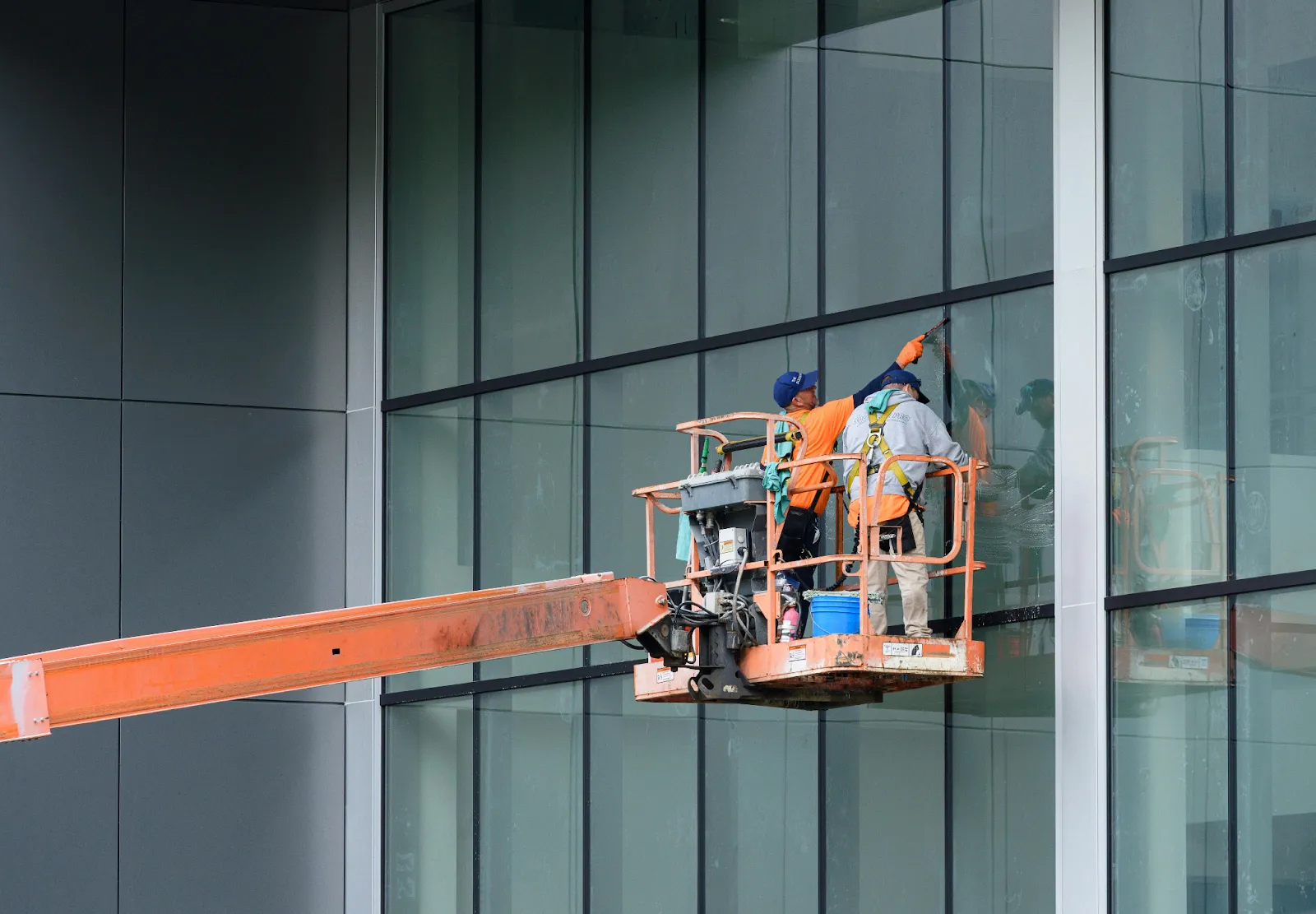
Workplace accidents, whether at construction, manufacturing, or even office sites, have been marked as potentially significant threats to organizations across all industries. This disruption prevents the everyday operation and results in injury to the workers or thousands of liability claims.
Some accidents cannot be avoided, but in the majority of cases, the accidents are preventable with a simple safety training program, good communication, and hazard identification. Your step toward developing a safe working environment is looking into its causes. This article looks at eight major ones and the right tips to minimize their occurrence.

Poor posture while sitting, lifting things without proper technique, or failing to give breaks during working hours can bring about musculoskeletal disorders. However, they are insidious in their progressive nature and can later become persistent restrictions on productivity while generating huge medical costs.
For the eradication of ergonomic risks, employers may invest in adjustable chairs and workstations and may occasionally provide training on proper lifting. Incorporating regular breaks, stretching, and job rotation is also a possible cure where high-stress careers are involved. Investing in ergonomics makes the workforce avoid workplace hazards. It also creates a better environment for the employee to stay and work in the moral ambiance of the workplace.
Due to live wires, defective equipment, circuit overloads, and incorrect wiring installation, shocks, burns, and even loss of life can result from electrocution. Most of these hazards are common in building sites, maintenance, and industrial companies where their workers work with or around electrical systems.
The organization has spread company-wide knowledge on electrical hazards through well-conducted training and by ensuring strict adoption of safety regulations. You may also want to partner with a top electric safety training company for quality insights. Employees will learn about how to safely operate electrical equipment and recognize how to spot hazards before they escalate.
Slips, trips, or falls make up a significant fraction of cases reported in a workplace. The common causes of these types of accidents are wet floors, cluttered walkways, loose rugs, surface disparities, and dim lighting. Injuries may be as little as a bruise or as severe as a fracture or concussion, which can make employees unable to work for several weeks or months.
Prevention should comprise awareness for all workers and solid housekeeping. You also want to ensure no clutter is found in any space and that spills are promptly cleaned, and warning signs are strategically placed in recognised potential danger zones. Recommendations like slip-resistant footwear and routine examination of stairs and flooring might assist these initiatives.
Poor training is among the highest factors that lead to workplace accidents, highlighted by a probable lack of adequate training for machines, the types of chemicals to which employees are exposed, and the safety procedures. Considering that errant employees endanger not only themselves but others as well. This can even affect the simplest tasks, as performing them incorrectly becomes hazardous without the proper direction given.
Employers must initiate suitable onboarding and ongoing training programs pertaining to the roles with specific jobs. Knowledge through participation in practical exercises, refresher training, and access to the newest versions of safety manuals can reinforce learning in this culture. This learning culture will not only protect employees but will also ensure compliance within the industry.
Machine accidents can result in amputation, crushing injuries, or burns. These accidents generally take place due to employees ignoring safety guards and isolation procedures set, unmonitored, or due to plain misuse of machines. Other significant risk factors affecting the level of risk include the age and condition of the machine, including a lack of regular and proper maintenance.
Preventing most of these industrial accidents would need proper training, supervision, and inspections of all equipment. It is the responsibility of the employer to ensure that safety devices are affixed to the machines, operators are fully competent to use them, and that they are maintained according to an agreed schedule.
Overwork and fatigue are significant causes of accidents in the workplace, especially accidents that occur due to prolonged working hours or heavy physical exertion. A tired worker is less alert and more inclined to sidestep safety measures or think poorly. Overexertion injuries include sprains, strains, heat exhaustion, or similar effects.
Sensible shift scheduling and breaks help combat the incursion of fatigue. In addition to breaking provisions whenever possible, employers may provide other features such as hydration stations and climate-controlled settings in wellness programs. Supervision of employees' voice concerns whenever overworked shows that safety and health are being instilled within a healthy and safe working environment.
Hazards include chemicals that could cause burns, diseases, and skin irritation to workers who are not adequately protected. The industries of manufacturing, health care, and cleaning services usually engage with chemicals that would have destructive effects on whoever is indiscreet in their handling of them. Their risks are worsened further by accidents, such as spills or wrong storage.
The employer should also see to it that hazard communication standards are followed as laid down by regulation and that the workers receive their equipment as well as training on safety handling and emergency response. Good labeling and storage of chemicals cannot be overemphasized. In doing this, you protect not only the workers' health but also the environment and avoid costly liability.
Workplaces where safety is ignored, tools and equipment are poorly maintained, and employees are made to compromise safety for speed. The situation worsens due to the absence of communication concerning safety issues between management and the employees, which in turn leads to accidents that could otherwise be avoided.
An organization has to cultivate a safety culture from top management down. Managers should serve as role models, foster hazard reporting, and honor safety accomplishments. Regular audits and risk analysis should be part of developing environments where safety becomes second nature and not an afterthought.
Though they cannot be eliminated from the workplace, knowledge of their causes goes a long way toward reducing their frequency and severity significantly. Avoiding any form of accident, from falls to electrical hazards to fatigue, is indeed a win for both the employees and the company. Promoting training, a culture of safety, and initiatives will create a business environment in which employees thrive safely and feel confident.
Slips, trips, and falls represent a significant portion of all reported workplace incidents. They are commonly caused by everyday hazards such as wet floors, cluttered areas, uneven surfaces, and inadequate lighting.
To reduce injuries from poor ergonomics, you should invest in adjustable equipment like chairs and desks, provide training on correct lifting techniques, and encourage regular breaks and stretching. Rotating tasks can also help prevent repetitive strain.
Ongoing training ensures that your employees' knowledge of safety procedures remains current. It reinforces best practices for handling machinery and hazardous materials, helping to build a proactive safety culture and prevent accidents before they happen.
Management plays a crucial role by establishing and championing a safety-first culture. Leaders should act as role models, encourage employees to report hazards without fear, and consistently invest in safety audits and improvements. A strong safety programme, like those advocated by Robin Waite, starts from the top.
A tired worker has slower reaction times, reduced alertness, and is more prone to poor judgement. This makes them more likely to overlook safety protocols or make critical errors, especially when operating machinery or performing physically demanding tasks.